If you're troubleshooting a misfire condition on your vehicle, you may need to test the Coil-On-Plug ignition coils. A digital multimeter can be used to test the resistance of the primary and secondary windings in the coil. In this article, we'll learn how to test a 3-wire COP ignition coil with a multimeter.
Bad Ignition Coil Symptoms:
If your vehicle has a bad ignition coil, you may experience one or more of the following symptoms:
- Engine misfires: If your ignition coil is failing, you may experience engine misfires. This can happen when the spark plugs are not firing correctly.
- Poor fuel economy: A failing ignition coil can cause your vehicle to use more fuel than normal.
- Backfiring: If your ignition coil is failing, you may notice that your engine is backfiring.
- Stalling: A failing ignition coil can cause your vehicle to stall.
- Rough idling: If your ignition coil is failing, you may notice that your engine is idling rough.
- Check engine light: If your ignition coil is failing, you may see the check engine light come on.
- difficulty starting the engine: A failing ignition coil can make it difficult to start your engine.
If you experience any of these symptoms, it's important to have your vehicle checked by a mechanic as soon as possible. Ignition coils are an essential part of your vehicle's ignition system, and if they are not working properly, it can lead to serious engine problems.
Check your Coil-On-Plug three-wire ignition coil in one of three ways:
There are three ways to test the 3-wire coil on a plug with a multimeter. They are the power circuit test, ground circuit test, and triggering signal test.
1. Power Circuit Test
This is to check whether there is continuity in the power circuit. To do this, set your multimeter to the ohms scale and connect one lead to the positive terminal of the coil and the other lead to the negative terminal of the coil. If the reading is infinity, then there is no continuity and the coil is defective. If the reading is zero, then there is continuity and the coil is good.
2. Ground Circuit Test
This is to check whether there is continuity in the ground circuit. To do this, set your multimeter to the ohms scale and connect one lead to the ground terminal of the coil and the other lead to the negative terminal of the coil. If the reading is infinity, then there is no continuity and the coil is defective. If the reading is zero, then there is continuity and the coil is good.
3. Triggering Signal Test
This is to check whether there is a triggering signal from the ignition system. To do this, set your multimeter to the AC voltage scale and connect one lead to the positive terminal of the coil and the other lead to the ground terminal of the coil. If there is no triggering signal, then the reading will be zero. If there is a triggering signal, then you will get a reading on the multimeter. These are the three ways to test the 3-wire coil on a plug with a multimeter.

Step-by-Step Testing:
- Check for the presence of power at the coil. This can be done by testing for continuity between the positive terminal of the coil and a good ground point on the engine block. If there is power present, proceed to step 2. If there is no power present, check the fuse box or relay panel for a blown fuse or bad relay.
- Test for continuity between the negative terminal of the coil and a good ground point on the engine block. If there is continuity, proceed to step 3. If there is no continuity, replace the coil.
- Test for resistance between the primary terminals of the coil (between the positive and negative terminals). The resistance should be within the specifications of your particular vehicle. If it is not, replace the coil.
- Test for resistance between the secondary terminals of the coil (between the terminal that goes to the spark plug and the negative terminal). The resistance should be within the specifications of your particular vehicle. If it is not, replace the coil.
- If all tests are successful, reassemble everything and start the engine. If the engine does not start, check for spark at the spark plugs with a spark plug tester. If there is no spark, double-check all of your connections and test again. If there is still no spark, you may have a problem with the ignition system or fuel system. Consult a professional mechanic for further diagnosis.
Related Questions:
How do you test an ignition coil with three pins?
There are a few ways to test an ignition coil with three pins. One way is to use a multimeter to test the resistance between the two outer pins. The resistance should be within the range specified in the manufacturer's Manual. If it is not, then the coil is most likely defective and should be replaced.
Another way to test an ignition coil with three pins is to measure the voltage at the center pin while the engine is running. The voltage should be within the range specified in the manufacturer's manual. If it is not, then the coil is most likely defective and should be replaced.
If you suspect that your ignition coil is defective, it is best to replace it with a new one. Always consult your vehicle's service manual for the correct specifications and procedures.
How do you test a coil over plug with a multimeter?
If you suspect that a coil over plug may be faulty, you can test it using a multimeter. First, disconnect the negative battery terminal to prevent any accidental shocks. Next, locate the coil over the plug you want to test and remove it from the spark plug wire. Once the coil is removed, use the multimeter to test for continuity between the terminals. If there is no continuity, then the coil is most likely faulty and needs to be replaced.
How many ohms should an ignition coil have?
This is a question that does not have a definitive answer, as the correct amount of resistance for an ignition coil can vary depending on the make and model of the vehicle. However, in general, most ignition coils should have a primary resistance between 0.6 and 2 ohms, and a secondary resistance between 5 and 15 ohms. If you are unsure of the correct resistance for your specific vehicle, it is best to consult your car's service manual or an experienced automotive technician.
Conclusion:
In conclusion, testing a 3-wire coil on a plug with a multimeter is a relatively easy task that can be completed in a few simple steps. By following the above procedure, you should be able to test your coil and determine if it is functioning properly. If you have any further questions, please feel free to contact us.

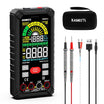




























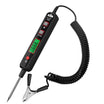
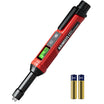





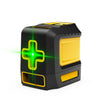
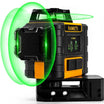


















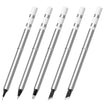









Leave a comment
All comments are moderated before being published.
This site is protected by hCaptcha and the hCaptcha Privacy Policy and Terms of Service apply.